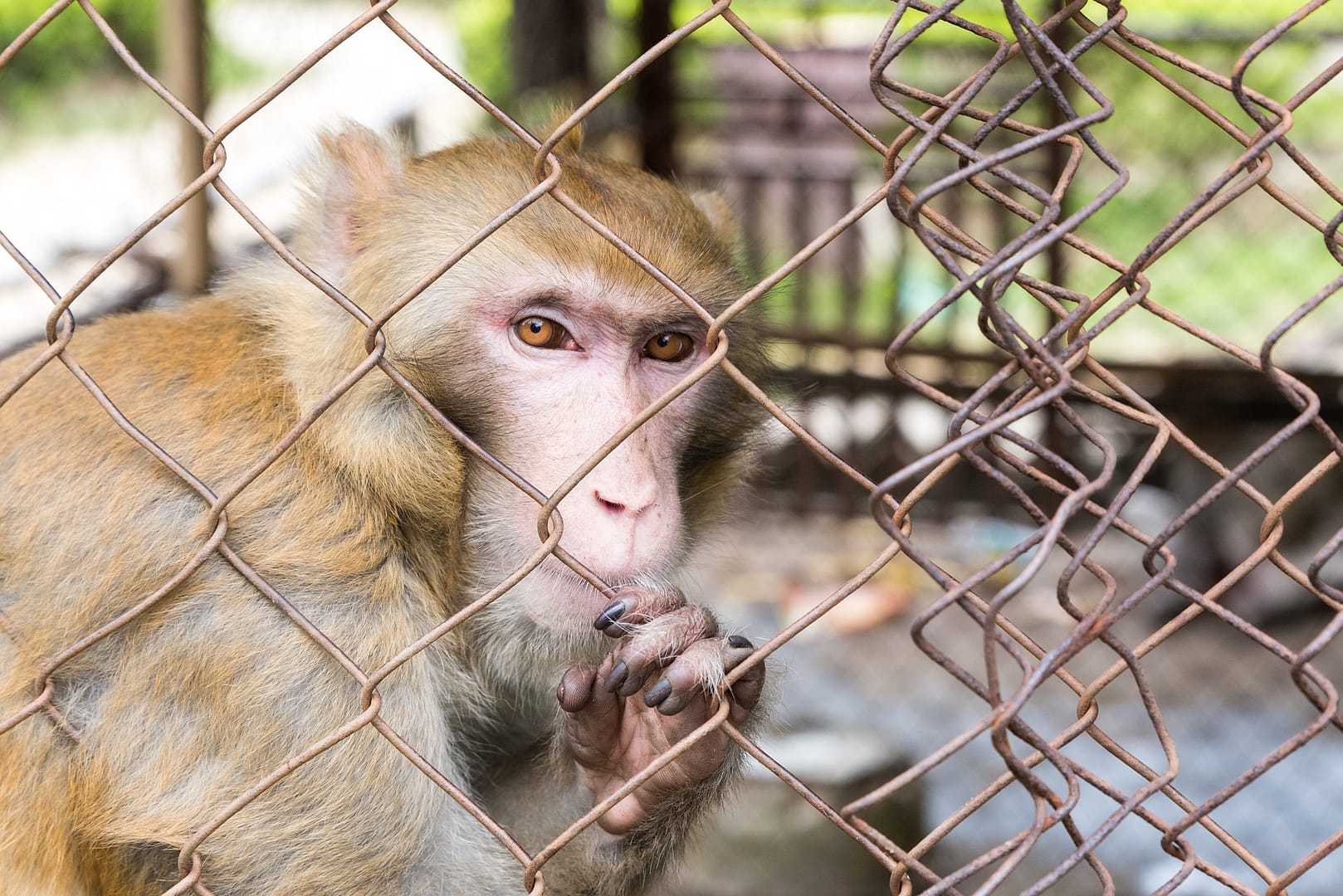[dropcap]O[/dropcap]n Christmas eve in 1982 a polar bear was born. Her name was Zara. Zara was born at a zoo in Germany. Less than 3 years after she was born Zara would be sold away from her family and to an animal trainer with questionable credibility. For the rest of her life Zara was sold back and forth between different zoos and animal shows. She would never be provided with the socialization that she needed to thrive. She very rarely got to interact with other animals. Zara’s purpose in life was to entertain humans, that should not be an animals’ job. Zara lived a long life of suffering in captivity,which is incomparable to a short life of freedom. Zoos claim to protect endangered animals. They say these animals will eventually be returned to the wild, but like Zara very few of them actually reach freedom. The Captive Animals’ Protection Society shares Zaras story.
Why do Zoos and Aquariums Exist?
The existence of zoos is often justified by the fact that they educated visitors or that they help promote conservation efforts. But not all zoos provide these things.
Many zoos claim the reason for their existence is to help protect endangered species, but most animals in zoos are actually not endangered. Captive Animals’ Protection Society or CAPS did a study in Wales zoos and found that “just 9% of species held in zoos in Wales are endangered in the wild.”
A study published by the Association of Zoos and Aquariums or AZA is being used a evidence that visits to zoos and aquariums produce positive effects on people’s attitudes toward animals. When the workers at Psychology Today analyzed this study they found at least six pieces of evidence that invalidate the authors’ conclusion. The writers at Psychology Today believe that “there remains no compelling evidence for the claim that zoos and aquariums promote attitude change, education, or interest in conservation in visitors.”
Instead of taking in smaller less known species that are endangered many zoos choose to build exhibits for popular and recognizable animals. If protecting species was the main goal of zoos they would be helping to protect and revive the natural habitats of these animals, not keeping them in captivity. In fact, according to a study done by the University of East Anglia captive breeding will not make a difference unless animal in the wild are protected.
Once animals are taken into captivity it becomes very hard for them to return to the wild. In an article National Geographic shares the results of a study. The results say that “only 16 of 145 reintroduction programs worldwide ever actually restored any animal populations to the wild. Of those, most were carried out by government agencies, not zoos.” This means there is an 11% success rate for returning animals back into their natural habitat. Animals lives in captivity are way different than their lives in the wild. This makes it very hard for animals to adjust. Even knowing this information zoos continue to tell us that they are helping with conservation.
Zoos claim they educate the people who visit them. But a study done by CAPS found that 41% of animals in UK aquariums had no signs of identification. Sometimes zoos and aquariums will provide their visitors with incorrect information. In the documentary Blackfish there is video footage of animal trainers telling visitors that orcas live longer in captivity than they do in the wild. This fact is very much false. As stated by a website all about whale facts and statistics: “Female killer whales that live in the wild have been known to live for up to 70 – 80 years.” They also share the fact that “in captivity most killer whales usually don’t live beyond their 20’s.” Zoos teach us about how animals act in captivity not how they act in the wild. [perfectpullquote align=”right” cite=”” link=”” color=”” class=”” size=””] Zoos teach us about how animals act in captivity not how they act in the wild. [/perfectpullquote]
According to an article about zoo conservation researchers believe that “visitors attending an animal demonstration retained large amounts of the content material weeks after having attended the animal demonstration.” The majority of zoo visitors do not even go to zoos with the intent of learning most zoo goers attend zoos for recreational purposes. A contradicting study of visitor behavior at 4 different zoos in the U.S. found that 86% of visitors said they went to zoos for social and entertainment purposes, while only 6% said that they went to zoos to learn more about animals.
In an article that was published by the Huffington post, professor Marc Bekoff compares shopping for a car to visiting a zoo: “I thought, as I listened to the discussion, that going to a zoo is like going to a car dealer to look at a car. Sure, zoo and auto showroom visitors learn something about the animals or the cars on display, but this does not mean that what they learn results in making a difference in the lives of the animals or that they actually buy a car.” Even if zoo visitors do learn about animals and conservation that does not mean that they will do anything to make a difference.
The real reason many zoos exist is to entertain humans and gain profit.
Life in Captivity vs. the Wild
There are many huge difference between the lives animals live in captivity and the lives they live in the wild. An article by One Green Planet shares some of these differences. Many animals who are held captive do not get enough mental stimulation or exercise. For examples Tigers in the wild can have a habitat that spans across up to 40 miles, but in captivity tigers are kept in extremely small enclosures. Dr.Mason an Oxford researcher is quoted in an article published by the New York Times saying, “Zoos must do better at providing mental stimulation and enrichment for their wide-ranging carnivores. Zoos unable to do so should not keep those species.” Some of the things zoos do provide are not the things these animals need.
It is not uncommon for animals in zoos to be fed an improper diet. Researchers at the University of Alabama reported that 40% of african elephants in U.S. zoos were obese and at risk of developing heart disease, arthritis, and infertility. Unnatural environments and food provided by humans are probably to blame.
Zoochosis
Captivity changes the way animals think and feel, many show signs of depression and stress. The Captive Animals’ Protection Society shares that when in captivity lions spend 48% of their time pacing, this is a sign of depression and behavioral problems.
Zoochosis is a word used to describe the typical behavior of captive animals. According to an article published by One Green Planet the term zoochosis was first used in 1992 by Bill Travers to “characterize the obsessive, and repetitive behaviors exhibited by animals kept in captivity.” These strange behaviors consist of pacing, rocking, swaying, vomiting, self-mutalation, bar-biting, and over grooming. Zoochosis often happens when animals are kept in small enclosures and when they do not get enough mental exercise.
The video above shows a Black Bear in captivity acting in unnatural ways. This bear is clearly in distress. This behavior continues for over 3 minutes.
Zoochosis can also lead animals to act in violent and aggressive ways. The film Blackfish shares that there have been many recorded acts of aggression by orcas in captivity, four of these ending in death. There are no recorded cases of a wild orca killing or hurting a human.
The Numbers
There are currently over 750 thousand animals in accredited zoos and aquariums. This is not including institutions that are not officially recognized by the Association of Zoos and Aquariums or AZA. According to an article shared by National Geographic there are over 2,400 zoos in the U.S. alone. Only 212 of these institutions are recognized by the AZA. This means that over 2,000 zoos in the U.S do not meet the high standard of care required to be recognized by the AZA. Since they are not recognized these zoos are providing insufficient care to their animals. [perfectpullquote align=”right” cite=”” link=”” color=”” class=”” size=””] Over 2,000 zoos in the U.S. do not meet the high standard of care required to be recognized by the AZA. [/perfectpullquote]
Captivity has become so big that for some species there are more captive animals than wild ones. As stated by the World Wildlife Fund: “With an estimated 5,000 tigers, the U.S. captive tiger population exceeds the approximately 3,200 tigers in the wild.”
Conclusion
The captivity of animals has become a controversy all over the globe. There are several reasons why captivity exists for animals, but if people thought hard enough we would be able to find solutions to these problems that do not negatively affect the animals involved. If we are thinking only about how captivity affects the animals and nothing else it becomes easy to see that the cons greatly outweigh the pros. Animals are still being taken from their natural habitats, there are other ways to educate people and protect animals that do not harm and exploit the animals involved.
Featured image: cc0 on pixabay by lin2867





Paula Green
Thank you so much this paper provided information that I needed for my own school essay
Kara
Where can I find who wrote this article?
MrKantor
Sorry, posts are made anonymous and accounts wiped each year for the next class of students to write on the blog.
Laini
really credible website! nicely done!
mason
nice job i like all the deatale of how every zoo has somthing wrong with with there cage
Hannah
The video of the bear really hit me. This post is super relevant and well written. Nice job!
Polar Bears > Humans
Your attention device sure got my attention. It filled me with unimaginable rage to read about Zara. That poor polar bear! You don’t see polar bears capturing humans and selling them left and right like that. It just shows how the ethics and moral standards of polar bears highly exceed those of mere humans. Thank you for all those interesting facts proving that it is not the animals that benefit from zoos, but the humans. It’s so sad to think that polar bears aren’t even endangered (they are only considered threatened), yet many are forced by humans to swim circles in a tiny pool for their whole life. I find it ironic that humans think zoos are necessary for conservation (making animal populations grow), while it is humanity’s actions that are making animal populations decrease in the first place! The evils of zoos show us the evil nature of humans, making polar bears look better and better every day.
Jacob
Great article! I absolutely agree with all the points you made. Nice job 🙂
StudentBlogger
Thank you for sharing this with us! I totally agree with every point you made. Animals should not be just another form of entertainment for us. They have needs, same as us, and I feel like a lot of people forget that. People wouldn’t be happy it if we shoved them in small cages, so whydo they feel it’s okay to do this with animals? Thank you for this well written blog.
Kaytlin
This article is amazing, it hits every point in why zoos must stop their behavior for the better of the animals. I haven’t gone to a zoo since I was ten for this exact reason, using animals for profit and entertainment of humans is disgusting and wrong. Thank you for acknowledging this wrongness in your article.